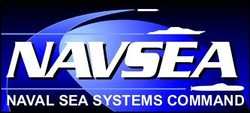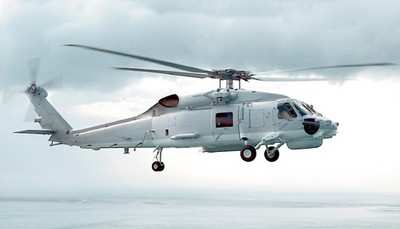Mon, Oct 18, 2010
Boost To Airborne Anti-Submarine Warfare
 Two contracts totaling $115.7 million have been awarded to
Raytheon for the AN/AQS-22 Airborne Low Frequency Sonar (ALFS), the
primary undersea warfare sensor for the U.S. Navy's MH-60R
multimission helicopter. The contracts were awarded by Naval Air
Systems Command and Defense Logistics Agency Aviation Strategic
Acquisition.
Two contracts totaling $115.7 million have been awarded to
Raytheon for the AN/AQS-22 Airborne Low Frequency Sonar (ALFS), the
primary undersea warfare sensor for the U.S. Navy's MH-60R
multimission helicopter. The contracts were awarded by Naval Air
Systems Command and Defense Logistics Agency Aviation Strategic
Acquisition.
ALFS provides critical undersea warfare mission support
capabilities, including submarine detection, tracking,
localization, classification, acoustic intercept, underwater
communication and environmental data collection.
Under the first contract, valued at $59.7 million, Raytheon
Integrated Defense Systems will manufacture, integrate, test and
deliver ALFS systems. The company will also provide data and
weapons replaceable assemblies for systems under test as well as
helicopter maintenance trainer assets. The second contract, for $56
million, provides for spares for fleet-deployed systems.
"ALFS provides an essential capability, the centerpiece of our
airborne anti-submarine warfare mission," said U.S. Navy Rear
Admiral Steven R. Eastburg, program executive officer, Air ASW,
Assault & Special Mission. "Working in tandem with our other
battlegroup assets, the versatility and effectiveness of ALFS
delivers our first line of defense against the threat of enemy
submarines."

MH-60R File Photo
The system's performance and capabilities were tested and proved
during two recent U.S. Navy undersea warfare exercises. The first
was conducted by the John C. Stennis Carrier Strike Group in the
Western Pacific Ocean. ALFS was deployed as the primary
anti-submarine warfare sensor onboard the MH-60R helicopter,
charged with defending the surface ships before the submarines
could come within range to launch an attack. According to Navy
officials, the carrier strike group successfully detected all
exercise submarines during the first deployment. The second
exercise is currently underway with the Abraham Lincoln Carrier
Strike Group.
More News
Takeoff Roll The process whereby an aircraft is aligned with the runway centerline and the aircraft is moving with the intent to take off. For helicopters, this pertains to the act>[...]
“We’re proud of the hard work that went into receiving this validation, and it will be a welcome relief to our customers in the European Union. We couldn’t be mor>[...]
"Aircraft Spruce is pleased to announce the acquisition of the parts distribution operations of Wag-Aero. Wag-Aero was founded in the 1960’s by Dick and Bobbie Wagner in the >[...]
IDENT Feature The special feature in the Air Traffic Control Radar Beacon System (ATCRBS) equipment. It is used to immediately distinguish one displayed beacon target from other be>[...]
Aero Linx: Pararescue Air Force Pararescuemen, also known as PJs, are the only DoD elite combat forces specifically organized, trained, equipped, and postured to conduct full spect>[...]
 ANN's Daily Aero-Term (05.10.24): Takeoff Roll
ANN's Daily Aero-Term (05.10.24): Takeoff Roll Aero-News: Quote of the Day (05.10.24)
Aero-News: Quote of the Day (05.10.24) Aero-News: Quote of the Day (05.11.24)
Aero-News: Quote of the Day (05.11.24) ANN's Daily Aero-Term (05.11.24): IDENT Feature
ANN's Daily Aero-Term (05.11.24): IDENT Feature ANN's Daily Aero-Linx (05.11.24)
ANN's Daily Aero-Linx (05.11.24)




